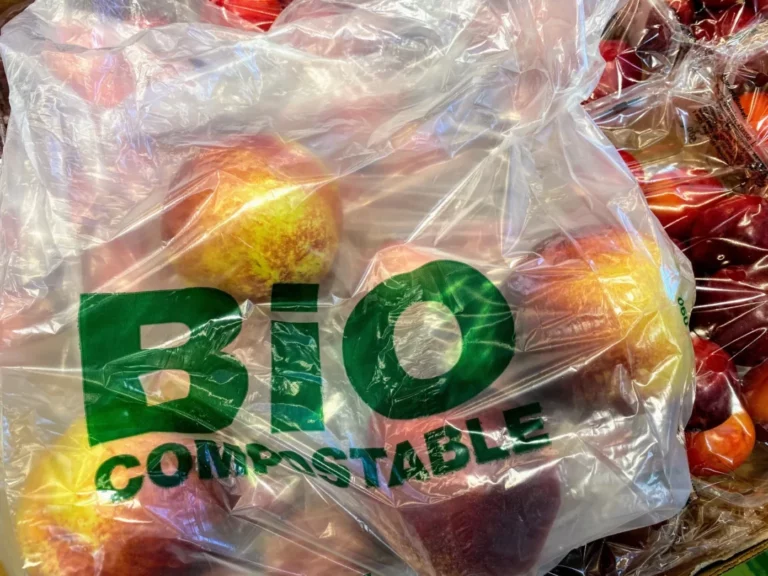Eco-Friendly Commuting: Alternatives to Reduce Your Environmental Impact
Yearn for a greener commute? Explore eco-friendly alternatives and discover how small changes can have a big impact on the environment.
Looking to shrink your carbon footprint and save some cash? Eco-friendly commuting is your answer. Public transit is not only a breeze but also slashes emissions and eases traffic. If you’re up for a bit of exercise, cycling, or walking to work, it adds up your health and cuts down pollution. Carpooling? It’s the way to go for building community ties and reducing your environmental impact. Embracing electric vehicles? You’ll enjoy cleaner air and a cooler ride. Every step towards eco-friendly commuting not only benefits the planet but also boosts your well-being. Stick with us, and you’ll uncover even more ways to transform your daily journey.
Why Choose Eco-Friendly?
Choosing eco-friendly commuting options, like cycling or public transit, cuts down on greenhouse gas emissions and saves you money, making it a smart and sustainable choice. You’re not just reducing your environmental impact; you’re also giving your wallet a break from the relentless fuel and parking costs. It’s a win-win situation.
Opting for green commuting methods like biking or walking isn’t just about being kind to the planet. It’s a fantastic way to boost your physical health. Imagine starting your day with a brisk walk or a bike ride, getting your heart pumping, and arriving at work or school not just on time but invigorated and ready to tackle the day. That’s the power of green commuting.
Moreover, embracing eco-friendly commuting can notably reduce carbon emissions. Public transportation systems play an important role in this, efficiently moving large numbers of people and lessening the number of vehicles on the road. This not only helps clear the air but also contributes to smoother traffic flow, easing your commute stress.
Get Your Hand on Your Eco-Friendly Living Starter Guide!
And let’s not forget the mental clarity and productivity boost that comes from a stress-free commute. Green commuting isn’t just a choice; it’s a lifestyle that promotes overall well-being.
Public Transportation Benefits
Public transportation greatly reduces greenhouse gas emissions, making it a crucial aspect of eco-friendly commuting. By hopping on a bus or a train, you’re not just getting to your destination, you’re making a conscious decision to lessen your carbon footprint. Public transit greatly cuts down on the amount of greenhouse gases released into the atmosphere by 37 million metric tons annually. Imagine if more people made this choice, the impact would be monumental.
- Imagine a city where the air is cleaner and the streets are less congested. This isn’t a pipe dream; it’s the direct result of increasing public transit usage.
- Visualize a world where everyone has access to affordable transportation, fostering a community that supports fair access and urban mobility.
- Picture a future where our cities are powered by cleaner energy sources, thanks to investments in public transit infrastructure promoting environmental sustainability.
Public transit doesn’t just reduce traffic congestion and air pollution; it’s a crucial component of creating sustainable and inclusive urban areas. By choosing public transportation, you’re not only ensuring your own convenience and saving on commuting costs, but you’re also contributing to a larger movement towards environmental sustainability and fair access for all. It’s a simple switch with profound implications for our planet and society.
Cycling as a Commute
Cycling to work not only slashes your carbon footprint but also boosts your physical health and mental well-being. Imagine cutting down an average of 6 pounds of carbon emissions per mile that’d otherwise come from your car. That’s not just good for the planet; it’s a win for your heart and mind, too. Regular rides can pump up your cardiovascular fitness, melt away stress, and sprinkle a little extra happiness into your day.
Now, it’s clear that getting on a bike might seem intimidating at first. But, with a reliable bike and the right gear for safety, you’ll find it’s a breeze. Plus, cities are catching on with improvements like dedicated bike lanes and bike-sharing programs, making cycling a safer and more accessible option for your commute. These aren’t just stripes on the road; they’re your invitation to join the eco-friendly commuting revolution.
Choosing your bike over your car for even short trips can notably ease traffic congestion and polish up our air quality. It’s a simple switch with a mighty environmental impact. So, why not give it a pedal? After all, cycling’s not just good for the earth. It’s a blast, too!
Walking for the Environment
Switching your commute to walking isn’t just a step towards a healthier you; it’s a leap for our planet, too. You’re cutting down on carbon emissions with every step, making a zero carbon footprint the goal rather than the dream.
Plus, walking’s health benefits, from heart health to weight management, are nothing to sneeze at – it’s a win-win for you and the environment.
Health Benefits Galore
Embracing walking as your go-to commuting option not only slashes carbon emissions but also greatly boosts your health, from cardiovascular strength to mental clarity. By stepping out the door, you’re stepping into a healthier you and contributing to a cleaner planet. Walking weaves a double thread of benefits for you and the environment.
- Imagine breathing easier as you reduce air pollution and cut down on greenhouse gas emissions.
- Picture your heart growing stronger with each step, combating lifestyle-related diseases through improved cardiovascular health.
- Visualize the clarity and peace of mind that comes with a stress-relieving stroll.
Incorporating walking into your daily routine fosters an active lifestyle, making you a hero for both your health and the planet.
Zero Carbon Footprint
Choosing to walk, even for short distances, greatly reduces your carbon emissions and advocates for a cleaner, healthier planet. Walking is the ultimate zero-emission mode of transport, slashing greenhouse gas emissions and cutting down on air pollution. It’s like giving the planet a big hug with every step you take.
By opting for this sustainable commuting method, you’re not just ditching the car keys; you’re embracing physical activity and saying no to fossil fuels. Each stride reduces your reliance on gas-guzzling vehicles, making a significant dent in your environmental impact.
Carpooling and Ride-Sharing
Diving into carpooling and ride-sharing can slash your carbon footprint by up to 30% while fostering stronger ties within your community. By choosing these commuting alternatives, you’re not just reducing emissions; you’re also building community bonds and discovering a cost-effective way to travel. Imagine the difference you’ll make, both environmentally and socially, by integrating these practices into your daily life.
Consider the following to create a vivid picture in your mind:
- Sharing laughs and morning coffee with neighbors or coworkers as you glide past congested lanes in the carpool lane.
- Watch your savings grow as you split fuel costs and reduce wear and tear on your personal vehicle.
- Feeling a sense of pride as you contribute to a greener planet by lessening the environmental impact of your commute.
Carpooling and ride-sharing aren’t just about getting from point A to B. They’re about creating a more connected and sustainable world. So, next time you’re planning your commute, remember that these options aren’t only practical but are steps toward a healthier planet and stronger community connections.
Electric and Hybrid Vehicles
As the world moves towards sustainability, electric and hybrid vehicles stand out as key players in decreasing our carbon footprint. These eco-friendly transportation options not only promise to lower carbon emissions but also pave the way for a future with cleaner air and quieter streets.
| Feature | Electric Vehicles (EVs) | Hybrid Vehicles |
|---|---|---|
| Power Source | Electricity only | Combination of gas and electricity |
| Carbon Emissions | Noticeably lower | Lower than traditional cars |
| Dependency on Fossil Fuels | None | Reduced |
| Noise Pollution | Reduced | Slightly decreased |
| Affordability & Accessibility | Increasing | Widely available |
Electric vehicles, powered solely by electricity, are at the forefront of sustainable transportation options. Thanks to advancements in battery technology, EVs are not just reducing greenhouse gases but also becoming more accessible and affordable. The expansion of charging infrastructure further supports the widespread adoption of these vehicles.
Hybrid vehicles, on the other hand, combine the best of both worlds. They use both gas and electricity, which reduces reliance on fossil fuels and helps to cut down air pollution. Plus, they’re an excellent intermediary option for those easing into the electric revolution.
The Role of Telecommuting
Telecommuting has surged in popularity, offering a vital alternative that greatly reduces the ecological footprint of daily commutes. By embracing remote work, you’re not only saying goodbye to the stress of rush-hour traffic but also contributing to a healthier planet.
Imagine:
- A morning where the only commute is from your bed to your home office, with zero emissions.
- The absence of car horns and exhaust fumes is replaced by the quiet of your own space.
- Streets are less congested, leading to cleaner air and a significant drop in greenhouse gas emissions.
This shift towards telecommuting doesn’t just benefit the environment; it also enhances your quality of life. You’ll find yourself with more time for personal activities, thanks to the elimination of long commutes. Plus, the flexibility in your schedule can lead to better job satisfaction and mental health.
The beauty of remote work lies in its ability to marry convenience with sustainability. By reducing traffic congestion and air pollution, telecommuting plays a vital role in diminishing our environmental impact.
Sustainable Urban Planning
As we turn our attention to sustainable urban planning, you’ll find it’s not just about cutting down on emissions. It’s about creating spaces where you can freely bike, catch a bus without the endless wait, and enjoy green parks that are just a stone’s throw away.
Expanding green spaces, enhancing public transit, and building bike-friendly infrastructure aren’t just good ideas; they’re the blueprint for cities that breathe easier and move smoother.
Green Spaces Expansion
Expanding green spaces in urban areas plays an essential role in combating the urban heat island effect, directly enhancing the air quality and comfort level for city dwellers. By integrating parks, gardens, and green corridors into urban planning, we’re not only boosting biodiversity but also providing peaceful retreats for everyone to enjoy. This shift towards green infrastructure, including green roofs and vertical gardens, helps absorb carbon dioxide and promotes a healthier environment.
Imagine strolling through:
- Lush parks filled with the sounds of nature,
- Vibrant gardens buzzing with bees and butterflies,
- Green corridors link neighborhoods with trails of tranquility.
Access to these green spaces has been shown to improve mental health, lower stress levels, and encourage physical activity. It’s a win-win for both the planet and our well-being.
Public Transit Enhancements
In the domain of sustainable urban planning, enhancing public transit systems stands as a cornerstone strategy to curb urban congestion and slash carbon footprints. By investing in public transportation, you’re not just catching a ride; you’re part of a larger movement to reduce carbon emissions.
Imagine hopping on an electric bus or tram, knowing you’re choosing one of the most eco-friendly options out there. These aren’t just vehicles; they’re mobile statements of how we can live better, together. Cities are integrating these systems to improve urban mobility, making it easier and more accessible for everyone to get around.
You’re not just saving the planet; you’re paving the way for a future where clean air and less traffic are the norms, not the exceptions. Welcome aboard the green revolution!
Bicycle-Friendly Infrastructure
Building on the momentum of enhancing public transit, creating bicycle-friendly infrastructure presents another effective avenue to further our environmental and urban mobility goals. Cities embracing this approach see remarkable benefits:
- A whopping 48% jump in cycling participation, making the streets livelier and healthier.
- A 50% drop in accidents, thanks to dedicated bike lanes that keep cyclists safe from zooming cars.
- A revitalizing change with a 25% reduction in greenhouse gas emissions, cutting down traffic congestion and boosting air quality.
Not only does this approach pave the way for a greener, cleaner city, but it also cranks up property values by up to 11%. Who knew pedaling could be so powerful? By investing in bicycle-friendly infrastructure, we’re steering towards a future where cycling isn’t just a workout routine but a way of life.
Tips for Eco-Friendly Moves
To make your commute more eco-friendly, consider these practical tips that can greatly reduce your environmental impact.
First off, embracing public transportation isn’t just a ride; it’s your contribution to saving the planet, reducing your carbon footprint by up to 4,800 pounds of greenhouse gases annually. It’s a win-win, really.
Next, think about this: walking or cycling not only puts money back in your pocket, about $2,000 a year in saved fuel costs, but it also gives you a free workout. Plus, utilizing biking infrastructure in your city can decrease traffic congestion and slash health care costs related to air pollution by up to $21 million annually. It is not too shabby to simply choose pedals over pedals.
If going solo isn’t your style, carpooling with even one other person can dramatically cut your carbon emissions in half. It’s like giving Mother Nature a high-five every time you ride together.
Lastly, electric vehicles are the superheroes of the highway. With zero tailpipe emissions, they’re a game-changer in making commutes more environmentally friendly. So, when you’re ready to go the extra mile (pun intended) for the planet, these eco-friendly moves are the way to go.
The Future of Commuting
As we steer towards 2040, electric vehicles are set to revolutionize the way we commute, promising a significant reduction in greenhouse gas emissions. With electric vehicles projected to account for 58% of global car sales, you’re not just getting a cool, silent ride; you’re becoming a pivotal part of a sustainable future.
Imagine streets where:
- The hum of electric vehicles replaces the roar of gas engines, drastically cutting down on noise and air pollution.
- Ride-sharing services and autonomous vehicles offer a seamless, shared mobility experience, making solo car trips a thing of the past.
- Urban planning champions walkable, mixed-use neighborhoods, encouraging you to leave the car at home and enjoy the fresh air.







